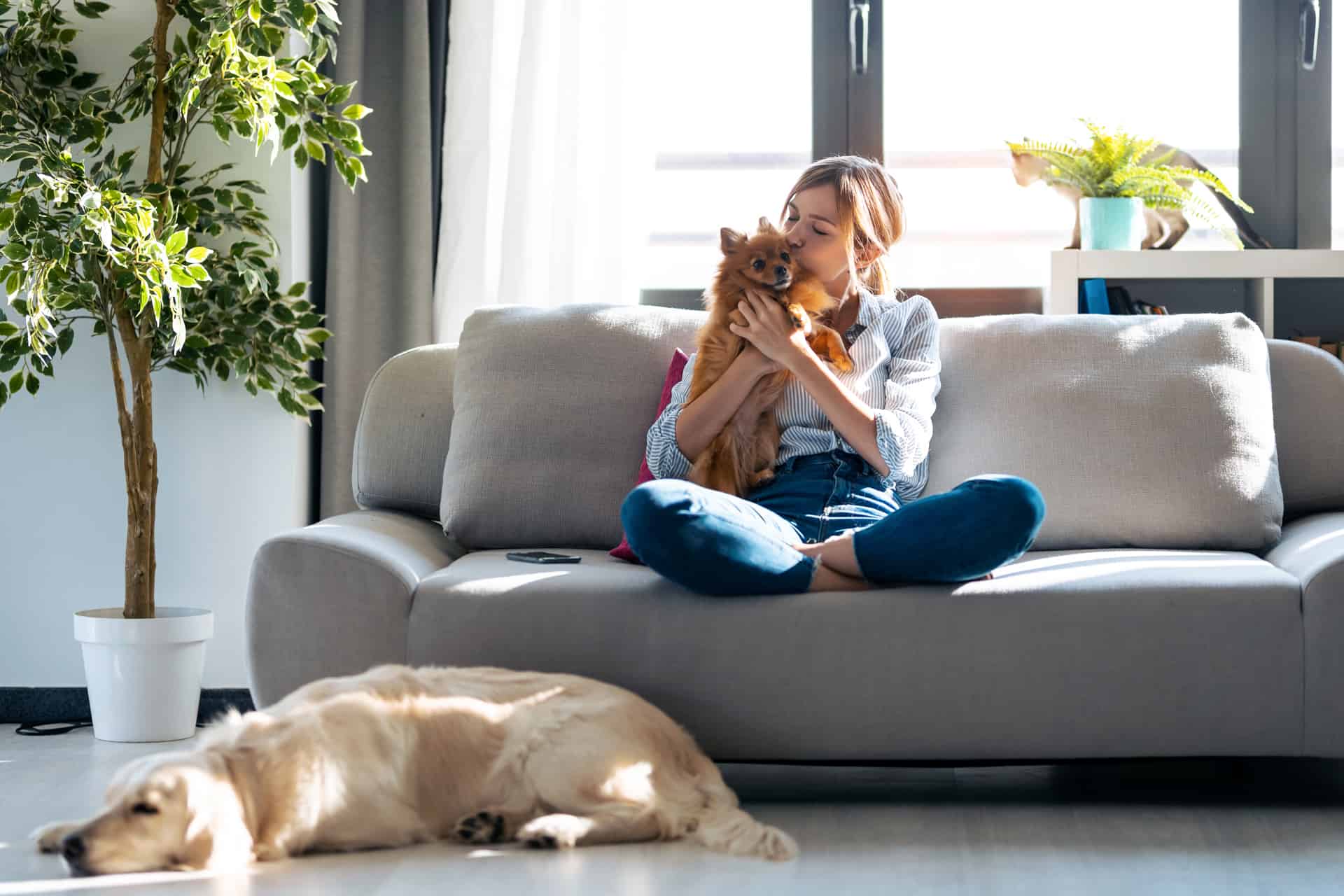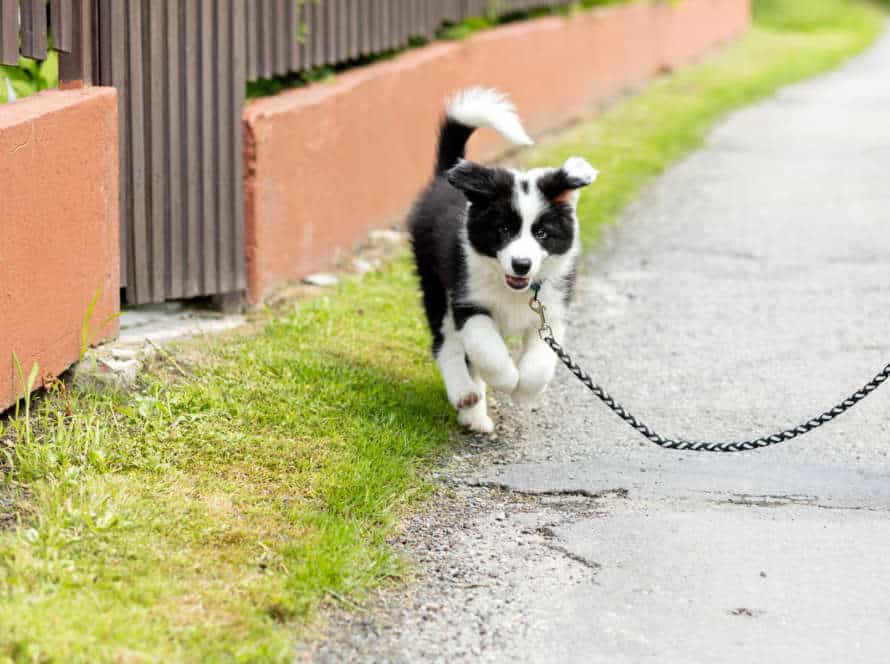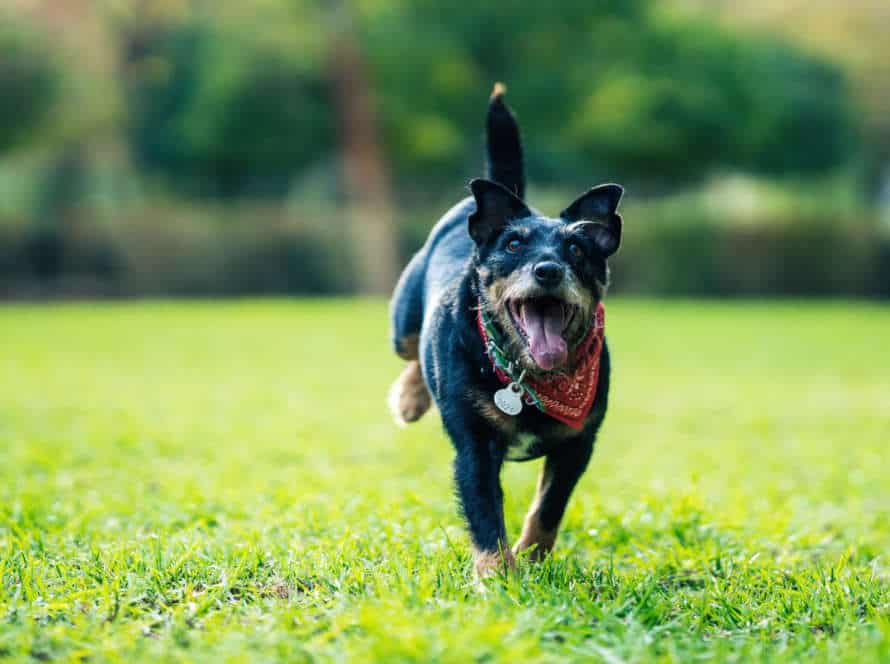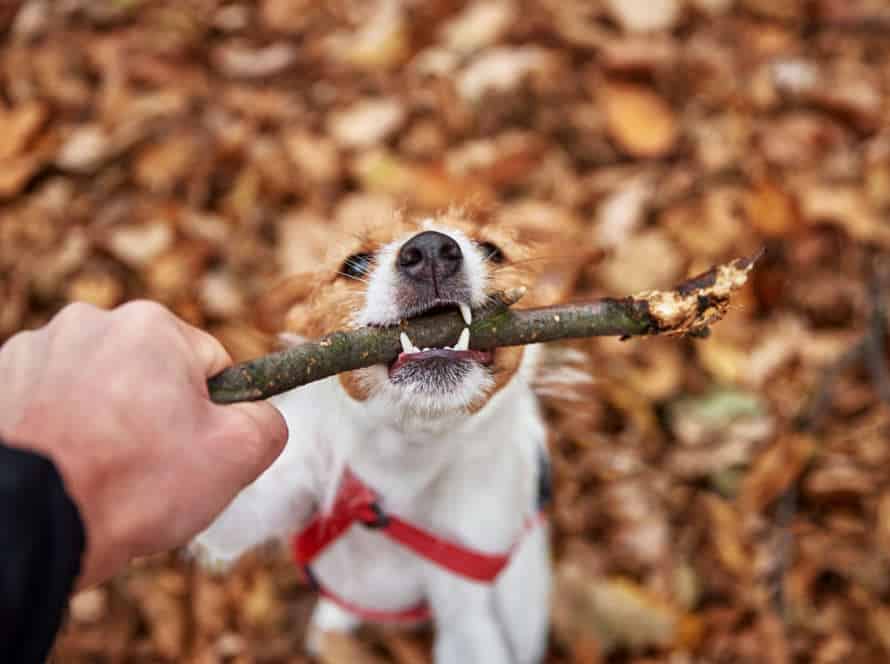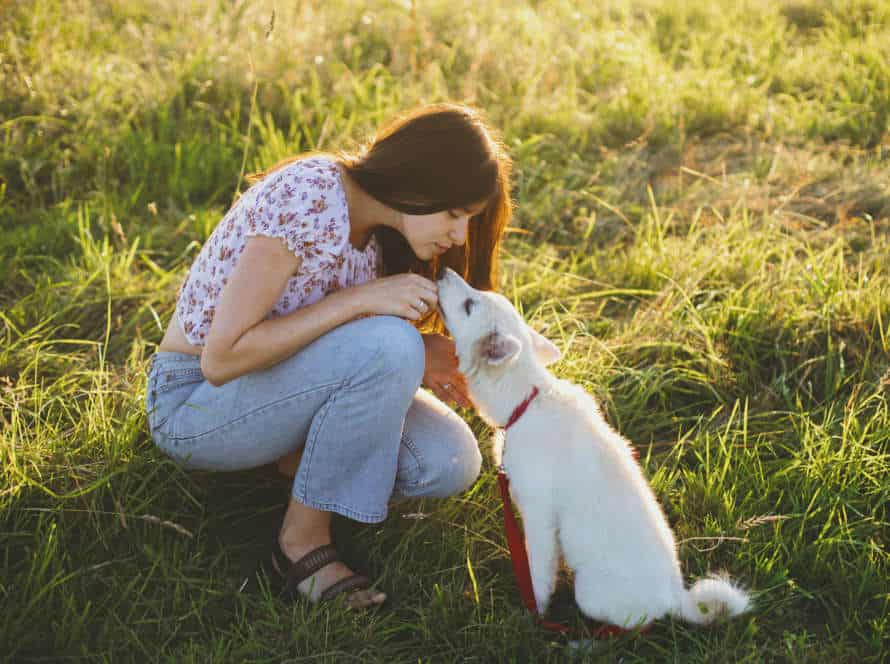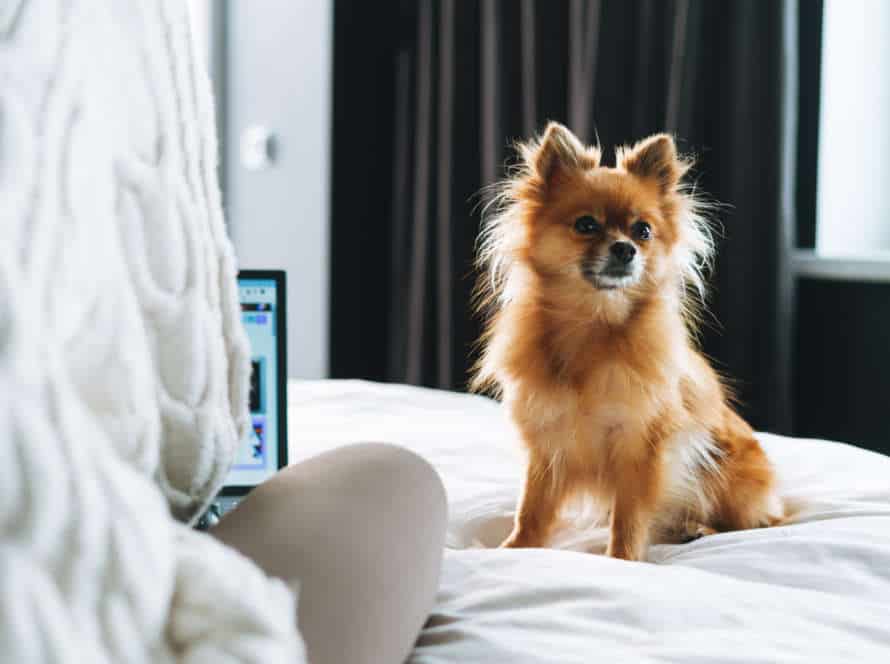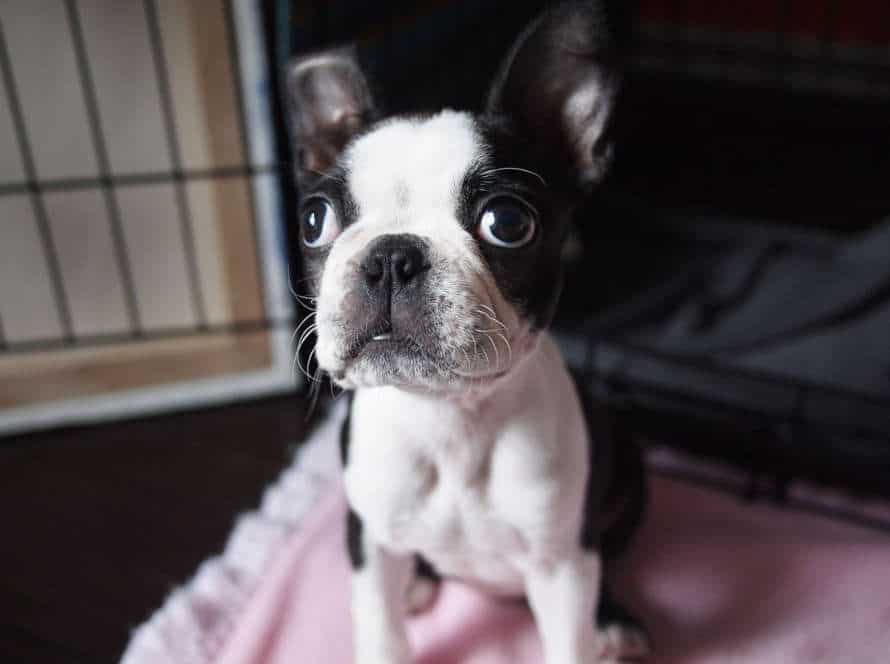Tips for Training Your Dog to Use an Indoor Potty
Train your pup for an indoor potty– great for those in apartments or with little outdoor space. Here are some tips:
- Pick a spot for their potty– pee pad, litter box, quiet and easy to get to, away from food and water.
- Be consistent; take them to the spot at the same times every day.
- Reward with treats and praise when they use the indoor potty correctly.
- Be patient; accidents will happen while they learn.
- Clean up accidents quickly with an enzymatic cleaner to get rid of odors and stop them from marking the same spot.
With patience and consistency, your pup will learn to use their indoor potty, making life easier for both of you.
Understand the Basics of Potty Training
Potty training your pup may seem intimidating. But it’s not impossible! With a bit of patience and knowledge, you can make it a breeze. To potty train your dog indoors, you should first understand the basics. Establishing and sticking to a timetable, rewarding positive behavior, and being patient are all key. Let’s look at the fundamentals of potty training now!
Determine the frequency of your dog’s needs
Potty training your pup? It’s key to figure out how often they need to go. This’ll help you make a plan, and provide your pup with chances to use the bathroom inside. Here are tips for understanding pup potty frequency:
- Watch carefully when they wake up, eat, and play. Note how often they go and how much they sniff around.
- Think about your pup’s age and size; puppies and small breeds need to go more often.
- Put together a potty schedule based on their needs, and keep to it.
- Remember to give your pup a reward when they use the indoor potty, and be patient while training!
Establish a consistent potty routine
For successful potty training, it’s essential to have a regular potty routine. Consider these tips:
- Set a specific time for feeding and watering your dog. This helps you anticipate their potty needs.
- Take your pup to the indoor potty area at regular intervals. Try morning, after meals, and before bed.
- Use a specific phrase to encourage them, like “Go potty” or “Do your business.”
- Reward your dog with treats, praise, or playtime when they use the potty correctly.
- Be patient and consistent. It might take some time for your dog to get used to the routine. With practice and perseverance, they’ll learn to use the indoor potty.
Use positive reinforcement
Positive reinforcement is key when potty-training your pup. Reward your dog when they use the designated area to go potty. Here are some tips:
- Choose a specific command, e.g. “go potty“.
- Set up a designated area, like pee pads or a litter box.
- When your pup uses the area, give praise and a treat.
- Avoid punishing for accidents. Redirect them to the area and reward them for using it.
Choosing and Setting Up an Indoor Potty Area
Train your pup to pee indoors! It’s a great way to housebreak. First, pick the perfect indoor potty system for your dog. Then, get ready to set up the potty area in your home. Here are some tips:
- Consider the size, location, and type of flooring when choosing the potty area.
- Make sure the area is comfortable for your pup!
Choose the appropriate potty location
Time to pick the perfect spot for your pup’s indoor potty area! Here’s some advice:
- Avoid busy places near your pup’s bed or food bowl.
- Choose a calm, distraction-free spot that’s easy for your pup to reach.
- Go for a waterproof or washable surface – like tiles or fake grass – it’ll make clean-up easier.
- If potty-training a puppy, pick somewhere close to the exit for speedy trips.
- Don’t forget: positive reinforcement and consistency are key to help your pup learn.
Select the right indoor potty product
Picking the correct indoor potty product is essential for setting up a successful indoor potty area for your pup. There are multiple options available, such as real grass patches, synthetic grass pads, litter boxes, and pee pads. The right choice depends on the size, breed, and preferences of your pup.
Real Grass Patches: Ideal for puppies or small breed dogs. Mimics outdoor experience and can be placed on balconies or patios.
Synthetic Grass Pads: Reusable and easy to clean. Perfect for larger dogs or those with frequent urination needs.
Litter Boxes: Best for cats or small dogs. Great for households with limited space.
Pee Pads: Disposable and affordable. Convenient option for pet owners.
When you’ve chosen the right potty product, set up the indoor potty area in a quiet, comfortable spot. Away from the dog’s feeding, sleeping, and playing areas. And don’t forget to use positive reinforcement techniques to help train your pup to use the indoor potty successfully.
Prepare the potty area for your dog
Housetraining your pup can be simpler with an indoor potty area. Here are some tips for setting it up:
- Select a spot that’s easy for your pup to get to, but away from where you prepare or eat food.
- Choose disposable pads or artificial grass for the potty area.
- Surround the area with a barrier or tray to contain any mess.
- Reward with treats and praise when your pup successfully uses the potty area.
- Clean and disinfect the area often.
With patience and consistency, your pup will learn to use the indoor potty area. Pro tip: Wean them off the area once they’re fully housetrained, as relying on it too long can inhibit learning proper behavior outdoors.
Introducing Your Dog to the Indoor Potty
Potty training your pup can get complicated. But it’s easier to introduce an indoor potty before outside potty training. With the correct method, you can help your dog get cozy with the concept of using an indoor potty. Here are some tips for introducing your pup to an indoor potty:
- Start by choosing a designated spot for the indoor potty that is easy for your pup to access.
- Show your pup the indoor potty and encourage them to explore it.
- Use a command or phrase for them to associate with using the indoor potty, such as “go potty.”
- Keep the indoor potty clean and dispose of any waste regularly to prevent unpleasant smells and encourage your pup to use it.
- Reward your pup for using the indoor potty with treats and positive reinforcement.
- Be patient and consistent with your training, as accidents may happen during the process.
Get your dog familiar with the potty area
Introducing your pup to the indoor toilet space can be tricky. Here’s how to train ’em and make ’em feel comfy in the zone:
- Positive reinforcement! Reward good behavior like giving treats or words of praise.
- Consistency is key. Take your dog to the spot at the same time every day.
- Location matters. Make sure it’s a quiet and easy to reach area.
- Patience is a virtue. Training requires lots of patience and consistency. Don’t punish for accidents – just redirect to the toilet area.
With these tips, you can help your furry friend get familiar with the indoor potty area, making it a stress-free and convenient option for both of you!
Encourage your dog to use the potty
Introducing your pup to the indoor potty can be hard. But, there are some tips that can help:
- Choose a spot that is easy for them to access.
- Reward them with treats and praise when they use it.
- Keep a set schedule for potty breaks, especially after meals or play.
- Use a specific command like “go potty” or “do your business“.
- Be patient and consistent, not punishing them for accidents.
With time and practice, they’ll connect the indoor potty to something positive.
Supervise your dog during the training process
Train your pup for an indoors potty? Supervise them close to make sure it works! Here are some tips:
- Pick a good place for the potty and always take them to the same spot.
- Reward them with treats or compliments when they do it right.
- Keep an eye on them during the learning process, especially in the first weeks, to avoid accidents and promote good behavior.
- Be consistent and don’t scold them for accidents.
- Let them access other rooms gradually as they become better at using the potty.
Supervision is key for teaching the right behavior and forming a positive connection with indoor potty use.
Troubleshooting Common Problems
Training a pup to use an indoor potty? Challenge accepted! Yet, common problems may arise, like housebreaking difficulty, fear of using the potty, and refusal to use it. Here’s some helpful tips to solve ’em!
Dealing with accidents outside of the potty area
Accidents outside their potty area can be annoying when teaching your dog how to use an indoors loo. Here’s how to fix the common issues and help them use the potty area:
- Patience and endurance is key – accidents are part of the learning curve!
- Stay consistent – take them to the same spot each time.
- Look out for signs they need to go, like sniffing or circling.
- Positive reinforcement – make sure to praise and reward good behaviour.
- Clean up the mess – use an enzyme cleaner to get rid of the smell and stop them from going back to the same spot.
With dedication and regular practice, your doggo will be able to use the indoor potty area even when you’re not around.
Adapting the training to fit your dog’s needs
Adapting training to suit your pup’s needs is essential for indoor potty success. Problems can arise, but adapting to fit their needs will help overcome these. Here are some tips:
- Reward good behavior with treats and praise.
- Remain consistent with the routine and area.
- Try various indoor potty options like grass, litter boxes, or pee pads to find what they like best.
- If they refuse to use the indoor potty, take them outside and try again later.
- Use crate training to limit accidents and form routine.
Adapting the training to fit your pup’s needs will make a successful indoor potty routine.
Maintaining a clean and hygienic potty area.
To train your pup to use an indoor potty, keeping it clean and hygienic is key! Here are some tips to make it easier:
- Use absorbent materials like puppy pads, newspapers, or artificial turf to cover the potty area. That way it’s easier to clean!
- Clean it regularly with disinfectant sprays or wipes so it’s hygienic and odor-free.
- Use positive reinforcement to encourage your pup to use the potty area.
- Consider using a designated potty area or crate as part of the training.
- Be patient – accidents will happen during training.
Hygiene is vital to prevent the spread of disease. So, be consistent and create a positive training experience for your furry friend!
Pro Tip: Establish a regular potty schedule and gradually reduce indoor potty sessions. Eventually, transition your pup to outdoor potty training.
Frequently Asked Questions
Q: What is the best type of indoor potty for my dog?
A: The most common types of indoor potties for dogs are artificial grass pads, real grass pads, or litter boxes. The best type of potty will depend on your dog’s size, breed, and personal preferences.
Q: How often should I take my dog to their indoor potty?
A: It is recommended to take your dog to their indoor potty every 2-4 hours, and after meals, naps, and playtime. Consistency is key in successfully potty training your dog.
Q: How do I encourage my dog to use their indoor potty?
A: Encourage your dog to use their indoor potty by giving them treats and praise when they use it correctly. Also, consider using a pheromone spray to attract them to the potty area.
Q: How do I deal with accidents outside of the indoor potty?
A: When accidents occur outside of the indoor potty, use positive reinforcement and redirect your dog to the designated potty area. Avoid punishing or scolding your dog as this can cause confusion and anxiety.
Q: Will my dog ever be able to transition to using outdoor potties?
A: Yes, with consistent training and positive reinforcement, most dogs can be trained to use outdoor potties. It is important to gradually transition them to the outdoor potty area and continue to use positive reinforcement.

